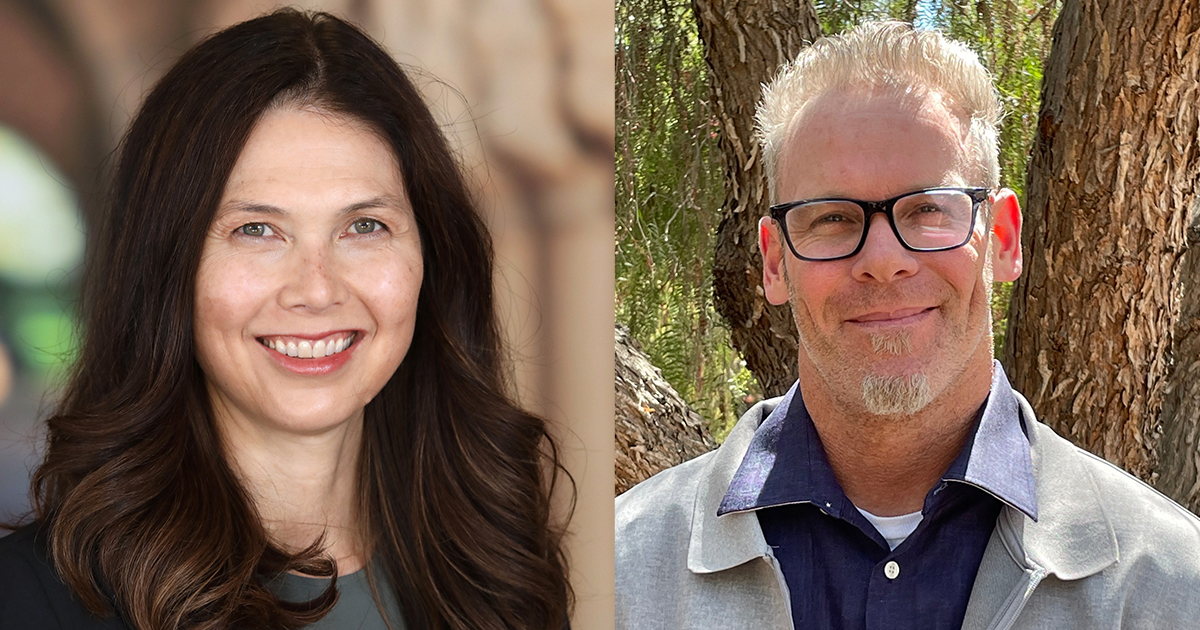Bancroft Library
Sign up for the Oral History Center’s Introductory Workshop (March 8)
The UC Berkeley Oral History Center is pleased to announce that applications are open for the 2024 Introductory Workshop!
The OHC is offering online versions of our educational programs again this year.
Introductory Workshop: Friday, March 8 from 8:30 a.m. to 2:30.p.m. Pacific Time, via Zoom
The 2024 Introduction to Oral History Workshop will be held virtually via Zoom on Friday, March 8, from 8:30 a.m. to 2:30.p.m. Pacific Time, with breaks woven in. Applications are now being accepted on a rolling basis. Please apply early, as spots fill up quickly.
Apply for the Introductory Workshop.
This workshop is designed for people who are interested in an introduction to the basic practice of oral history and in learning best practices. The workshop serves as a companion to our more in-depth Advanced Oral History Summer Institute held in August.
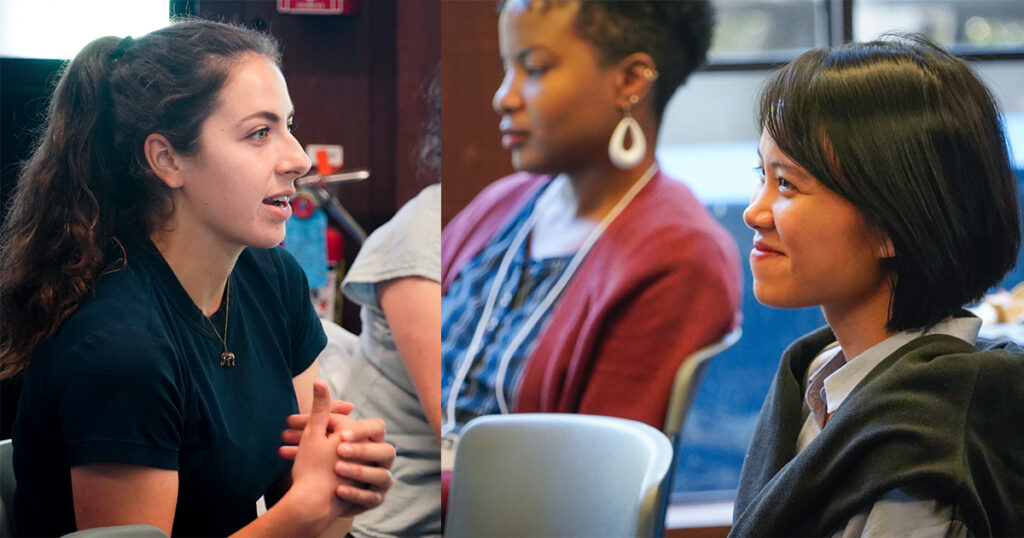
The workshop focuses on the foundational elements of oral history, including methodology and ethics, practice, and recording. It will be taught by our seasoned oral historians and include hands-on practice exercises. Everyone is welcome to attend the workshop. Prior attendees have included community-based historians, teachers, genealogists, public historians, and students in college or graduate school.
Tuition is $150. We are offering a limited number of participants a discounted tuition of $75 for students, independent scholars, or those experiencing financial hardship. If you would like to apply for discounted tuition, please indicate this on your application form and we will send you more information. Please note that the OHC is a soft-money research office of the university, and as such receives precious little state funding. Therefore, it is necessary that this educational initiative be a self-funding program. Unfortunately, we are unable to provide financial assistance to participants other than our limited number of scholarships. We encourage you to check in with your home institutions about financial assistance; in the past we have found that many programs have budgets to help underwrite some of the costs associated with attendance. We will provide receipts and certificates of completion as required for reimbursement.
Applications are accepted on a rolling basis. We encourage you to apply early, as spots fill up quickly.
If you have specific questions, please contact Shanna Farrell (sfarrell@library.berkeley.edu)
About the Oral History Center
UC Berkeley’s Oral History Center, or the OHC, is one of the oldest oral history programs in the world. We produce carefully researched, recorded, and transcribed oral histories and interpretive materials for the widest possible use. Since 1953 we have been preserving voices of people from all walks of life, with varying perspectives, experiences, pursuits, and backgrounds. We are committed to open access and our oral histories and interpretive materials are available online at no cost to scholars and the public.
Sign up for our monthly newsletter featuring think pieces, new releases, podcasts, Q&As, and everything oral history. Access the most recent articles from our home page or go straight to our blog home.
Out of the Archives: Patrick Hayashi: From Mail Carrier to Associate President to Artist
by Zachary Matsumoto
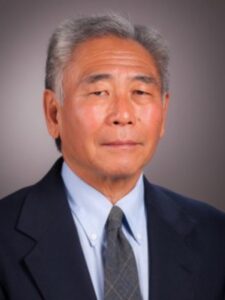
“My mom told me that an old deaf man, Mr. Wakasa, was walking his adopted stray dog around the perimeter of the camp,” recalled Patrick Hayashi. “His dog caught in the barbed wire fence and Mr. Wakasa went to save him and release him. The sentry ordered him to back away from the fence, but because he was deaf, he couldn’t do it, and so the sentry shot and killed him.”
This is the story of James Wakasa’s murder, which Patrick Hayashi’s mother told him when he was growing up. Wakasa was one of over 100,000 Japanese Americans incarcerated by the US government during World War II. In the incarceration camp of Topaz in the desert of central Utah, an armed US soldier shot and killed Wakasa. His death sparked outrage among Topaz’s incarcerees. Although individuals in the Japanese American community contest some of the details of Wakasa’s death, it remains a key, painful moment in the incarceration experience that Japanese Americans have passed down to their children.
The story of Wakasa’s death certainly remained an important memory for Hayashi, a Sansei—or third generation Japanese American—who was born in Topaz while his parents were unjustly imprisoned there. Hayashi discussed his life and career with the Oral History Center at UC Berkeley. His interview was conducted as part of the Japanese American Intergenerational Narratives Project, which explores trauma and healing across generations for Japanese Americans whose families were incarcerated during World War II.
As a young boy, after their release from the prison camp, Hayashi grew up with his parents in Hayward, California. His mother maintained ties to the Japanese American community, largely through church. However, when he was still young, Hayashi’s mother passed away of heart failure. This deeply saddened Hayashi’s father, who now carried the responsibility of raising a family as a single parent. Additionally, according to Hayashi, his father must have felt the guilt and shame from his incarceration experience in World War II. Nonetheless, Hayashi’s father exhibited resistance. He was a “no-no,” meaning he said “no” to two questions in an infamous loyalty questionnaire the US government forced upon the imprisoned Japanese Americans during WWII. The questions asked if one would be willing to serve in the US Army, and if one would swear loyalty to America and rescind loyalty to Japan. This sparked outrage among the Japanese American community, who were asked to serve a country that imprisoned them, and rescind a fealty to Japan that they didn’t have. Hayashi’s father’s “no, no” response was, as Hayashi believed, a “principled stand” against these unreasonable questions.
But his father never mentioned this resistance until Hayashi was an adult. Like many post war Japanese American families, Hayashi’s family did not often discuss their incarceration experiences.
Similar to his father, Hayashi also recalled feeling shame and guilt around incarceration and the war. In high school, he felt particularly ashamed of his identity when his class discussed WWII and the atomic bombs that destroyed Hiroshima and Nagasaki. At that time, Hayashi later recollected, “I was preferring not to be Japanese.” He also experienced a disconnect with the Japanese American community, largely due to his mother’s passing.Nevertheless, Hayashi shared many fond memories of his childhood, from reading Sherlock Holmes and science fiction books as an elementary schooler to becoming a star tennis athlete in high school.
If Hayashi felt shame due to his family incarceration, he channeled it into his work, starting in the 1960s. When reading his oral history, I noticed a theme of activism exhibited across his career in a near continuous fight for justice. After dropping out of college and working as a mail carrier, he found his calling in literature and became a UC Berkeley professor in the newfound Asian American Studies Department—one of the first such departments ever created. These developments for Hayashi came at the time of 1960s social movements in America. In one such movement, student protests in California universities led to the creation of an Ethnic Studies program at UC Berkeley.
Hayashi later became involved as a UC administrator, first working for Cal as the head of Student Conduct. After an investigation revealed that UC admissions were discriminating against Asian American applicants in the 1980s, Hayashi was appointed Associate Vice Chancellor of Admissions and Enrollment. In this position, and later as Associate President in the University of California, Hayashi worked on policy development and acted as an advocate for student applicants. He played a key role in fighting unfair admissions policies, such as the National Merit Scholarship Program (for discriminating against marginalized groups) and the Scholastic Aptitude Test or SAT (for not only explicitly favoring privileged students, but for also being, as Hayashi noted, a “bad test”).
One example of his advocacy came through at a meeting he attended soon after becoming Associate Vice Chancellor. In this meeting, Harold Doc Howe, Lyndon B. Johnson’s former Secretary of Education, communicated views with which Hayashi disagreed. Despite feeling nervous, Hayashi publicly challenged Howe in front of his colleagues. “My hands are actually trembling visibly in front of me and I said, ‘Howe begins with the assumption that a person’s writing ability reflects that person’s thinking ability. I don’t begin with that assumption. Instead I turn it into a question, and the question is to what extent does a person’s writing ability reflect that person’s ability to think?’ I said, ‘When you pose it as a question, the answer becomes obvious, it depends. If a person is new to the country or if the person is poor and has attended poor schools where the quality of education is low, then it’s incorrect and unfair to think that a person’s writing ability reflects that person’s thinking ability. Because oftentimes people just haven’t had the opportunity and the assistance to develop writing ability.’”
This, to me, demonstrates Hayashi’s sense of right and wrong – a fight against prejudiced assumptions in the admissions process.
Over time, too, Hayashi started to come to terms with the incarceration experience that his family hardly discussed and loomed over him like a cloud. One key moment for him occurred during his work as a UC professor. After reading James Baldwin’s Notes of a Native Son, in which Baldwin discusses his experiences with racism and understanding the good his overbearing father did, Hayashi felt a better understanding both of his own father and his emotions. According to Hayashi, “[Baldwin] helped me understand my rage. And how if you’ve been suppressed constantly by racism, that goes somewhere and then it explodes. That was my pattern, and then it made me realize that it must have been my father’s experience as well. He was a proud man, he was smart, but it was clear, the injustice was clear to him and so it must have gone somewhere.”
To me, Hayashi’s understanding of Baldwin speaks to the emotional scars of incarceration that burdened many Japanese Americans. After experiencing racist injustice during World War II, anger would seem like a reasonable response. Perhaps the silence of many Japanese Americans after the war was the product of the internal, bubbling anger that people of color have felt throughout American history.
As Hayashi continued to come to terms with his family’s incarceration experience, James Wakasa’s story reemerged as an important moment. In the late 1980s, Hayashi visited an art exhibition from the incarceration camps, filling him with emotion. He recalled, “I choked up more and more and then the fourth painting I saw was Chiura Obata’s sumi-E sketch of James Wakasa falling over after he was shot, and I started to sob. It was terribly embarrassing, but everyone around me was mainly Nisei, they were crying too. That’s when I started revisiting the camps in a systematic way.”
Hayashi held true to his word. Later in life, he became more and more involved in the memorialization of Topaz, the camp of his family’s imprisonment. After retirement from Cal, Hayashi played a role in the creation and work of the Topaz Museum, located near the site of the former incarceration camp. He taught workshops at the museum for teachers in Utah, served as the keynote speaker at a 2016 Day of Remembrance event, and interviewed the Topaz class of ‘45—high schoolers who graduated in 1945 as Topaz incarcerees. Hayashi also took up painting as a major passion and a creative expression of his identity.
Hayashi’s life story is a reminder that one does not need to be defined by internalized pain of the past, but can instead come to terms with that pain and tell its story. The interviews and life stories told throughout the Japanese American Intergenerational Narratives Oral History Project illuminate themes of memory, belonging, and healing. Hayashi’s life fully demonstrates each of these themes and serves as an inspiration for Japanese Americans pained by the past but who also want to make a difference.
To this day, he remains active in preserving the memory of incarceration. In 2016, Nancy Ukai, an activist who fought the auctioning of incarceration art, approached Hayashi with a request to create a painting for a Day of the Dead altar at a Japanese American cemetery. The request? To paint James Wakasa’s soul. His story, a source of intergenerational pain and important in Hayashi’s own life, now lay in the hands of Hayashi: a man who healed.
Patrick Hayashi’s oral history transcript is available on the OHC’s website.
Zachary Matsumoto is a sophomore at UC Berkeley currently studying History and participating as an Oral History Center URAP apprentice. He was drawn to the Oral History Center after attending a Bancroft Roundtable presentation about the Japanese American Intergenerational Narratives Oral History Project. American history is a current academic interest of his, including the histories of communities relating to his background as a Chinese and Japanese American. In his free time, Zachary likes to go for runs, watch sports, and play taiko.
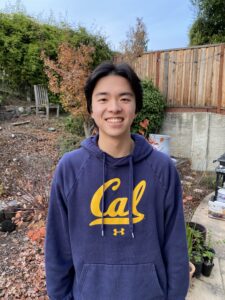
OHC Staff Reflects on 2023
The Oral History Center has been as busy as ever this year, publishing hundreds of hours’ worth of interviews online. On top of making this wide range of voices available to the public, my colleagues have also used these collections of The Bancroft Library to interpret, frame and share new stories about our past. In November, the Japanese American Intergenerational Narratives project was launched, featuring interviews with the descendants of the incarceration camps during World War II. Not only are the transcripts online, but there is also a podcast and a deeply moving work of graphic illustrations that draw meaning from the interviews. In October, Todd Holmes and Roger Eardley-Pryor designed, wrote, and launched a new museum exhibit, Voices for the Environment: A Century of Bay Area Activism at the Bancroft Library Gallery, which runs through November 2024. There is an accompanying digital exhibit, which will feature podcasts, mini-documentaries, and a curriculum guide for students and teachers that will live on long after the gallery exhibit closes.
Center staff showed great leadership in the field of oral history. There is always lots to say about our oral history education programs, but what was new this year was OHC participation in a pilot historical methods course for undergraduate majors of UC Berkeley’s history program. Oral historian Shanna Farrell took a seat this year on the council of the Oral History Association, and Amanda Tewes and Roger Eardley-Pryor also led panels and gave papers at the OHA annual meeting. Todd Holmes, together with our Advanced Institute alum Emi Kuboyama, won the Autry Prize from the Western History Association for their documentary on the redress of the incarceration of Japanese Americans during World War II.
Communications and editorial lead Jill Schlessinger created, oversaw, and updated our editorial process. On the back end of our production, David Dunham led the team that transferred and preserved almost two thousand hours of audio-video that was trapped on defunct recording formats. Of course, we couldn’t have done this work without the help we get from student employees in production, preservation, and communications. Finally, following a competitive national search, I would like to celebrate the arrival of the new historian of science, technology, and medicine, Liz Semler.
I want to thank every member of the OHC staff for a great year! From all of us, we wish you all a peaceful and magical holiday and a wonderful 2024!
–OHC Director Paul Burnett
OHC Staff Reflections
I am grateful to have celebrated my 21st year with the Oral History Center. It is a privilege to support the efforts of our interviewers in producing the array of oral histories produced this year. I relish the opportunity to work with student workers, undergraduate research apprenticeship program [URAP] participants, and librarian interns. Students are integral to our production and preservation processes, ensuring that our transcripts, audio, and video are accessible and preserved. They also bring new perspectives and insights into our oral histories. It’s a cliche to say win-win, but our student workers and interns consistently share how participating with the OHC enriches their academic, intellectual, professional, and human interests. We could not do a fraction of the work we do without them. Special thanks this year to the following students and interns that contributed in countless ways to the OHC: Max Afifi; Sadie Baldwin; Peter Beshay; Hue Bui; Mina Choi; Georgia Cutter; Jason de Haaff; Nikki Do; Ava Escobedo; Leah Freeman; Samantha Goodson; Meiya Gujjalu; Anthony Lin; Lina Matine; Solomon Nichols; Guisselle Salazar; Mela Seyoum; Joe Sison; Manyi Tang; Kate Trout; Erin Vinson; and Cathy Zhang.
–David Dunham
My fifth year at OHC was the busiest yet! I’m especially grateful for exceptional and collaborative colleagues at OHC. This past year, we curated our first oral-history-focused gallery exhibit with videos and a podcast; we promoted our innovative Japanese American Intergenerational Narratives project, including graphic art and a superlative podcast; and we continued conducting and publishing outstanding oral history interviews. I’m also grateful that our new colleague, Liz, joined the OHC team. I hope you and yours celebrate all that’s good at the end of this year, and that next year is even better.
–Roger Eardley-Pryor
What a year 2023 has been! While I’ve had the privilege of working on several projects this past year, I’m very proud of working with Roger Eardley-Pryor and Amanda Tewes on the Japanese American Intergenerational Narratives project, which launched in November. We interviewed 23 survivors and descendants of WWII-era site of Japanese American incarceration, and produced a podcast and commissioned an artist to make graphic illustrations based on these oral histories. It’s been an extremely meaningful project to be a part of, and I’m grateful for the collaborative efforts of my colleagues to bring it to fruition.
–Shanna Farrell
Looking back on the year of 2023, I am struck by the power of collaboration. This year the Oral History Center curated the multimedia exhibit, Voices for the Environment: A Century of Bay Area Activism, at The Bancroft Gallery, a collaborative effort that was beyond rewarding. I am extremely grateful for the opportunity to do this work and collaborate with an amazing cast of colleagues.
–Todd Holmes
I look forward every year to this opportunity to acknowledge the talented team of student editors that make the pace of our work possible. They do the work of professional editors, create abstracts for oral histories with missing metadata, write articles about our narrators and projects, and provide invaluable suggestions in our department’s quest for continuous improvement of our workflow and processes. We said farewell to some long-term employees who recently graduated: Mollie Appel-Turner, William Cooke, Adam Hagen, Serena Ingalls, and Shannon White; I’d like to say thank you to our ongoing editor, Timothy Yue; and welcome two new staff, Nikhil Jagota and Lauren von Aspen. My favorite memory from 2023 was learning about how the experience of working with oral history has had a profound impact on how our student employees see things. I hope you will enjoy reading about their reflections as much as I did in this article, Connection, Insight, Inspiration, Truth: Berkeley undergraduates reflect on oral history.
–Jill Schlessinger
This past year has been a wild ride! I said goodbye to multi-year projects, moved across the country, and started a position at the Oral History Center in October. Although it’s only been a few months, I’ve already learned much in my new role, including technical details like how to use video recording equipment and more broadly about UC Berkeley and the surrounding area. As with any big change, sometimes I feel overwhelmed with the new-ness of it all. But change brings opportunity! I’m grateful for the chance to forge a new path as an interviewer and historian here at the Oral History Center and am excited to discover what the upcoming year holds.
–Liz Semler
In November 2023, I was honored to be a part of a great team (along with Roger Eardley-Pryor and Shanna Farrell) that launched the Japanese American Intergenerational Narratives Oral History Project, featuring 100 hours of oral history interviews with 23 Japanese American narrators who are survivors and descendants of two World War II-era sites of incarceration: Manzanar in California and Topaz in Utah. This public launch highlighted the release of most of the 23 oral history interviews, a four-part podcast series based on these original interviews, and graphic art inspired by the stories and themes from the interviews. It has truly been a meaningful experience to be a part of such important work about intergenerational memory and healing. Many thanks to the National Park Service’s Japanese American Confinement Sites Grant for funding this phase of the project!
–Amanda Tewes
The OHC Welcomes Liz Semler
The Oral History Center is pleased to welcome Liz Semler, our new historian of science, medicine, and technology!
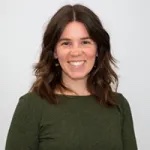
Liz comes to the UC Berkeley Library from the University of Minnesota’s Program in the History of Science, Technology, and Medicine. Elizabeth Semler is a medical and business historian and received her PhD from the University of Minnesota’s Program in the History of Science, Technology, and Medicine, where her academic work focused on the relationship between chronic diseases and diet in the United States and the Nordic countries. Her dissertation interrogated the intersections of epidemiological research, American business interests, and the development of public health prevention policies in the twentieth century. During her time at the University of Minnesota, Elizabeth taught undergraduate and community education courses on medical and technological history. She also participated in numerous public-facing history projects, including museum exhibits, educational websites, and film documentaries. Taken together, this work has fed Elizabeth’s passion for collecting, preserving, and making history accessible to broad audiences.
We sat down with Liz for a Q&A to get to know her better, which is below.
Q: When did you first encounter oral history?
A: I first encountered oral history in the first year of graduate school – I had the opportunity to participate in a project documenting the history of cardiovascular innovations at the University of Minnesota. This involved interviewing practicing clinicians, research scientists, and academicians about their contributions to cardiovascular care. It was a very different experience than studying archival documents and other static sources. Although I enjoy archival work, it was exciting to be able to ask questions and directly interact with narrators!
Q: What role did oral history play in your previous work?
A: I have worked on numerous public history projects over the past decade that have contained oral history components, with topics ranging from medical to the history of computing. Oral histories were also an important component of my dissertation project, which focused on the relationship between coronary heart disease and diet in the mid-to-late twentieth century.
Q: Which interviewers have been your biggest influences, oral historians or otherwise?
A: I really enjoy listening to Anna Sale’s interview podcast Death, Sex & Money. She does a great job of discussing challenging subjects with folks and I have learned a lot about how to tackle difficult, sensitive topics from listening to those conversations. I just learned the podcast may end in December, 2023. Who knows what will happen to archived episodes, so I recommend people give it a listen while they can!
Q: What projects are you most excited to work on at the OHC?
A: I’m still in the process of familiarizing myself with upcoming projects at OHC but I’m already very excited by the resources here at University of California, Berkeley as well as in the broader UC system. As a medical historian, the collections at UCSF have grabbed my attention – I’m looking forward to building connections across campuses and, hopefully, bringing together the resources of the Bay Area in collaborative projects.
Q: What is your dream oral history project?
A: Before COVID-19 shuttered things in 2020, I was in the process of interviewing folks who had worked at the midwest-based supercomputer company Cray Research. The company’s history is really interesting but extant archival materials are minimal and little has been written about Cray from an historical perspective. I’d like to finish capturing people’s experiences at Cray, if possible!
Welcome, Liz!
OHC URAP Student Zachary Matsumoto Reflects on Work with Japanese American Intergenerational Narratives Project
Zachary Matsumoto is a sophomore at UC Berkeley currently studying History and participating as an Oral History Center URAP apprentice. He was drawn to the Oral History Center after attending a Bancroft Roundtable presentation about the Japanese American Intergenerational Narratives Oral History Project. American history is a current academic interest of his, including the histories of communities relating to his background as a Chinese and Japanese American. In his free time, Zachary likes to go for runs, watch sports, and play taiko.
Reflections on Work with the Japanese American Intergenerational Narratives Project
by Zachary Matsumoto

This fall of 2023, I became a URAP student at the Oral History Center under the guidance of Shanna Farrell, Amanda Tewes, and Roger Eardley-Pryor. My work throughout this semester largely consisted of researching, analyzing, and writing about the oral histories of the Japanese American Intergenerational Narratives Project, as well as the Japanese American Confinement Sites Project. These oral histories highlighted a historical event that greatly affected my own family.
In 1942, the United States government, at the beginning of its involvement in World War II, issued Executive Order 9066. This order imprisoned Japanese Americans living on the West Coast and placed them in remote prison camps across the country. My paternal grandparents and their families were among them. Growing up, my parents told me of my grandparents’ histories as incarcerees, stressing the wrongdoing and unfairness done to them by the US government. As I grew up reading and watching material on Japanese American incarceration, I began to understand the details of the incarceration experience: how truly unfair it was; the crippling effects of losing a home for a remote prison camp; the silence of incarcerees afterward; and how themes of incarceration endure today.
Fast forward to 2023, when I joined the OHC as a URAP student and explored the oral histories of Japanese Americans. One component I learned from these oral histories was the traumatic intergenerational effects of incarceration: the pain and guilt that incarcerees passed down to their children, and at times even their grandchildren. This was a very eye-opening experience for me, as I personally felt as if the incarceration of Japanese Americans was an important, but almost distant historical event in my own life. Reading these oral histories, as well as listening to a podcast series “From Generation to Generation: The Legacy of Japanese American Incarceration,” based on the very same interviews, was at times an emotional experience. Hearing of descendants losing their sense of belonging, feeling disconnected with their culture, and living without the knowledge of their families’ incarceration experiences was heartbreaking to hear.
But what really struck me about these oral histories was not only the intergenerational pain and sorrow, but the agency exhibited by the project narrators after incarceration. This is something I knew but not really understood the scope of. This agency, as recounted in the oral histories, was both public and private. Patrick Hayashi, a man born in the incarceration camps and whose oral history I studied extensively, demonstrated activism as one of California’s first Asian American Studies professors and by fighting against prejudiced admissions practices. But more privately, he vowed to reexamine the trauma of his family’s past through creating artwork and educating Utah teachers on incarceration. Other individuals, in the 1970s and 1980s, participated in the redress movement, in which Japanese Americans questioned the wrongdoing of WWII incarceration and successfully drew attention to this experience. This eventually led to a formal apology and reparations paid by the US government.
Even in more recent years, the agency and activism of individuals in the oral history interviews shines brightly. Ruth Sasaki, an author, joined an organization named Tsuru for Solidarity: a group that fought against the forced incarceration of migrants crossing the US-Mexico border. After the Trump administration detained migrants at the US-Mexico border, including children, as part of the Zero Tolerance Policy, Sasaki and twenty-six other Tsuru for Solidarity members flew to Oklahoma to protest, along with a large number of Native American, Latino, and African American activists. Sasaki’s story, in particular, served as a reminder for me of the living memory of Japanese American incarceration and how that community in particular could serve as a key fighter: a guard against the unjust, unprovoked incarceration of marginalized groups today.
One moment of agency, in particular, was very personal for me and my interests. Roy Hirabayashi, a longtime San Jose resident and the descendant of Topaz survivors, recalled the founding of San Jose Taiko, a taiko (Japanese drumming) performance group. As San Jose Taiko began its performances and found its sound and style, Hirabayashi realized he did not know many traditional Japanese themes and rhythms for playing taiko; instead, he took rhythmic inspiration from music he was exposed to in the Bay Area, such as R&B and Latin soul. According to Hirabayashi, “We felt we were establishing pretty much early on that we, in Asian American sound, using what we called the Japanese drum, the taiko, our version.” For Hirabayashi, taiko was not just a performance instrument but an intentional expression of his developing Asian American identity. This, to me, shows his agency and sense of self. Reading Hirabayashi’s oral history also highlighted my personal connection to this interview. As a child, my mom drove me forty minutes to Santa Rosa so I could learn and practice taiko. Now, as a sophomore in college, I am a current member of Cal Raijin Taiko, UC Berkeley’s taiko organization and performance group. The fact that an instrument that occupies an important place in my own life is wrapped in the history and agency of Japanese Americans captivates me and brings me closer to the history of the Japanese American experience.
Over the course of my URAP experience in the Oral History Center, I felt my eyes further opened to the individual experiences of the descendants of incarcerees. What stands out was not just their guilt and attempts to cope with the scars of incarceration, but instead their strength through identity and activism. As a Japanese American myself, I feel proud to be part of this legacy of strength. In the future, I hope to continue exploring my identity, and what it means to be a descendant of the incarceration camps. As I explored the oral histories in the Japanese American Intergenerational Narratives Project, I encountered personal questions: why am I not feeling the same burden as the descendants of incarceration? Why do I feel as if incarceration was a memory without a strong effect on my own life? These questions remain in my mind, and I will continue to seek answers to them throughout my life.
The Bancroft Library offers fellowships to support research in our special collections
We invite graduate students, undergraduates, and independent scholars to apply by Feb. 5, 2024
The Bancroft Library at UC Berkeley is pleased to announce we are now accepting applications for our 2024-25 fellowships and awards, available to graduate students, undergraduates, and independent scholars conducting research in our special collections. The Bancroft Library is committed to fostering a diverse and inclusive research environment, and seeks to support students and scholars using the collections both for traditional archival and bibliographic research, as well as those wishing to use the collections for creative projects.
Applications are due February 5, 2024, at 5 p.m., with decisions to be made by early April 2024.
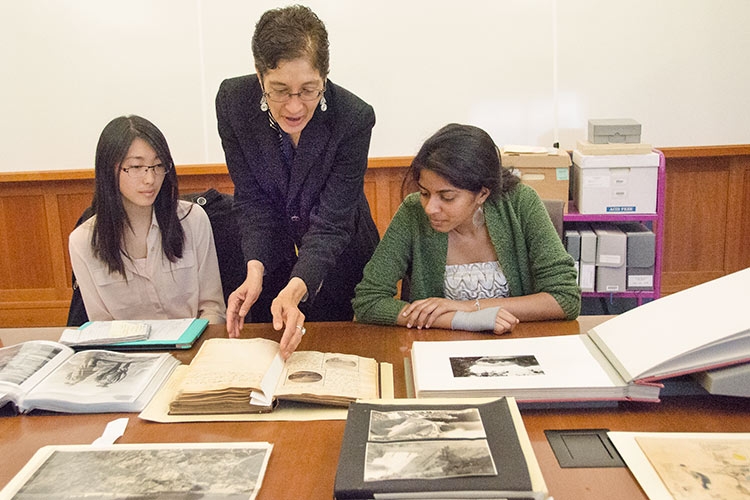
Research areas
Several fellowships offer funding for research that would benefit from the use of any source materials in The Bancroft Library. Other fellowships are focused around specific subject areas. Our fellowships and awards range in amounts.
Our 2024-25 fellowships and awards are in the following research areas:
- Research that would benefit from the use of any source materials in the Bancroft
- History of California
- Nineteenth century American West and related topics
- Jewish experience in California from 1848 to 1915
- Print culture in any part of the Western Hemisphere, or any investigation of the history of the book in the Americas
How to apply
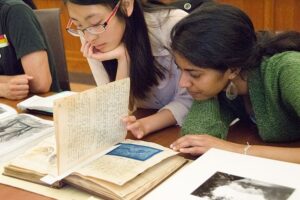
Our Fellowships and Awards website has details about all the eligibility criteria for each fellowship or award, and the application process. Some opportunities are designated for Berkeley undergraduates, some for graduate students at any University of California campus, and some are open to students at any college or university or independent scholars —complete descriptions are on the website.
Please share this announcement with undergraduate and graduate students, and anyone else who may be interested in The Bancroft Library’s fellowship program.
About the Bancroft Library
The Bancroft Library is the primary special collections library at UC Berkeley, and one of the largest and most heavily used libraries of manuscripts, rare books, and unique materials in the United States. Bancroft supports major research and instructional activities and plays a leading role in the development of the university’s research collections.
Since Bancroft is a reference library, its collections are non-circulating, which means they are only available for your use in the Heller Reading Room. Fellowships and Awards facilitate this in-person research.
The Bancroft Library welcomes researchers from the UC Berkeley campus, nationally, and from around the world. Our holdings currently include: more than 600,000 volumes; 60 million manuscript items; 8 million photographs/pictorial materials; over 3 million digital files; 43,000 microforms; and 23,000 maps.
People worldwide can access Bancroft’s digital collections, which include digitized materials from the library’s extensive and ever-growing holdings, as well as born digital materials collected as part of our archival manuscript and pictorial collections.
Luella Lilly: Cal’s first and only Director of Women’s Athletics
By William Cooke
In 1976, Luella “Lue” Lilly became the first and only athletic director of the newly created Women’s Intercollegiate Athletic Department at Cal. Over the course of her 17-year tenure, eight of the women’s sports programs won a combined 28 conference championships. In 1989, USA Today ranked Cal’s women’s athletics program number four overall in the nation. Today, several women’s programs are consistently among the best in the country and Cal female athletes, former and current, compete in the Olympic Games.
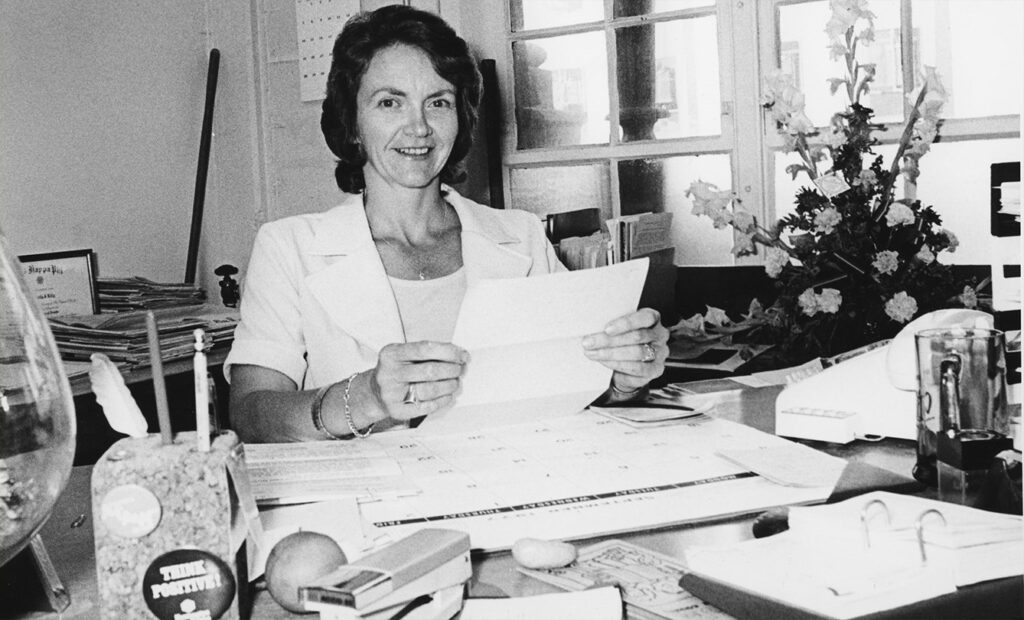
Now one of the premier destinations for elite female student athletes, Cal has come a long way from being one of the last universities in the country to create a women’s athletics department and offer scholarships to female athletes. That history starts with Lilly.
You don’t try to keep up with Joneses. You figure out where the Joneses are going to go and get there before they do. And that was my philosophy. —Luella Lilly
Lilly had a steep mountain to climb when she first arrived at Berkeley. Ongoing budget constraints, competition over the use of limited sports facilities, and tensions between departments meant that she could not fight every battle all at once. Her wisdom and guidance set up women’s athletics for a successful future. Lilly’s oral history, conducted by the UC Berkeley Oral History Center in 2010, describes when and how Lilly picked her battles.
Playing catch up
Cal hired Lilly in 1976, four years after Title IX was signed into law by President Richard Nixon. The law prohibited discrimination on the basis of sex at any institution receiving federal aid. Lilly recalls that the newly founded Women’s Intercollegiate Athletics Department had a lot of catching up to do in regard to providing women with equal athletics opportunities. According to Lilly:
Cal was the last major university in the United States to give an athletic scholarship to women. They gave scholarships after I arrived, and there were no scholarships prior to my arrival. And most of the schools—some of them gave them prior to ’72 and others—the majority of the schools, if they weren’t giving scholarships when Title IX went in, they gave some scholarships right away.

It was only in the fall of 1977 that Cal’s first batch of female recruits came to campus. Among them were Colleen Galloway, who held the record for career points in Cal Women’s Basketball history until 2019, and standout three-sport athlete Sheryl Johnson, who played in three Olympic games for USA field hockey.
In her first year at the helm, Lilly prioritized providing scholarships for a few reasons. In her oral history, Lilly explains that the Women’s Sports Foundation published a booklet annually that listed which schools provided scholarships in each sport. The department needed scholarships in order to compete for the best recruits, of course. But to be recognized nationally as a school that provided scholarships was just as important.
I also knew that when it [the Women’s Sports Foundation booklet] came out in February, that Cal would not be included or it wouldn’t say anything… Talking with [Vice Chancellor] Bob Kerley—[I] told him that we could jumpstart a full year if we could get some money to get the scholarships… and then when that little form came out I could check [it]. And so what I did was—they gave me—I think it’s $6,740 dollars, which was—tuition and fees were $670, I think they were, something like that. Anyway, it gave me ten tuition and fees at that point in time. So I gave them to each of the sports that could give scholarships, and had the coach divide it so that whatever way they wanted to—if they wanted to give somebody a full ride that was up to them, but if they wanted to split it among all—they could do anything they wanted to in their particular sport. But I just wanted to be able to mark the check that said we had them.
The money needed to provide scholarships and pay coaches—both of which are necessary in order to build a successful athletic program—would not and did not appear out of thin air. Lilly says in her oral history, “With fundraising we’ve—I think we’ve done most everything anybody has done in fundraising.” Even so, early fundraising results were disappointing.
One thing that really backfired and really, really surprised us was that we had Bruce [now Caitlin] Jenner and Steve Bartkowski play a demonstration tennis match—and it was five bucks to get in and all this sort of thing, and this was right after Jenner had won the Olympic decathlon, and we just assumed that everybody would really, really come. And nobody—we had so few people that we went up to the department and asked all the staff to please come down to put some more people in the stands. And we opened the gates and just let anybody that wanted to come, to come in to look for it, because it was so embarrassing how few came. And the thing I remember us saying too, that was probably with Chris Dawson. “You know, if this was a fundraiser for the men, the thing would be full.”
Support and strife
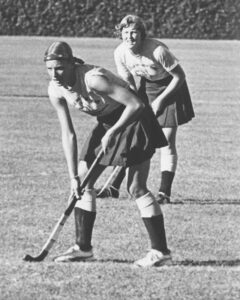
Ironically, men involved in Cal Athletics, including boosters, administrators, and journalists, were some of Lilly’s biggest supporters as well as her biggest adversaries. Lilly describes an environment of contentiousness over the scheduling of limited athletics facilities between the four athletics departments: Physical Education, Recreational Sports, Men’s Athletics, and Women’s Athletics. She believed that sometimes the tensions were understandable given Cal’s limited number of facilities; but, at other times, the competition between departments felt totally contrived.
A lack of cooperation meant that Lilly’s women’s programs had to deal with last-minute facilities scheduling changes, as well as explicit efforts to block cooperation between the men’s and women’s athletics departments. Lilly had to decide whether to resist those efforts or focus her energies elsewhere. Oftentimes she wavered between the two:
I think that cooperation is the main thing. I think you can really, really help each other… One of the things that I did do here was that I had all of my coaches and athletes give gold cards to all of their counterparts. I think the men’s gymnastics team should be able to watch the women’s gymnastics team free of charge, so I did that. And then [Vice Chancellor for student affairs] Bob Kerley talked to me and said that—here we go again—that [Men’s Athletic Director] Dave Maggard was upset with it, that we were trying to get tickets for the men’s events, and he went on and on about what I was trying to do, so I said to Bob, “All right. We won’t do it.” So then I came back the next year and I said, “I am not comfortable with this. I don’t like the fact that we can’t cooperate and have the men come to the women’s events. I don’t even care if he just thinks we’re trying to increase our attendance. The point is that you’re working together.” Because again, I came from that background of when the swimmers were on the same buses and that sort of thing, in high school. So it’s really hard for me to just think that everybody is so territorial. So Bob [Kerley] said, “If you feel that strongly about it, just go ahead and do it and we’ll just put up with the consequences.” So I had my coaches do it the next year.
Some instances of antagonism seemed inexplicable to Lilly who, as a volleyball and basketball coach at the University of Nevada prior to her tenure at Cal, learned the value of cooperation between the men’s and women’s coaches.
I said, “Well, let’s try to have a Christmas party and get to know some of the male staff. So all my coaches invited all the men coaches to come to a Christmas party, and the Alumni House gave it to us for free. This is where I say I had a lot of cooperation—they gave us the room; we didn’t have to pay for it. And nobody showed up except for the men’s football staff. And Roger Theder said nobody’s going to tell him what party he could and couldn’t attend. And another coach had told me that Maggard threatened that if anybody came to this party they’d be fired. So here’s all the women’s staff and eight football coaches. And we had a good time, you know. But that was just it; it was one of those situations again that just didn’t make any sense for me. The tennis coaches should know each other, and all this sort of thing.
Although Lilly found some adversaries in other sports-related departments, she found supporters of Cal Athletics elsewhere. In her oral history, Lilly says that “the strongest supporters that we’ve had and the people that have helped us the most along the way have been men.”
Doug Gray, a reporter at The Daily Californian, took an interest in Cal Women’s Athletics and began covering Lilly’s programs. Members of Cal’s athletics boosters, the Bear Boosters, slowly warmed up to the idea of supporting Lilly’s department. But many were reluctant to openly support the Department, which made for some odd interactions with male boosters. As Lilly recalled:
When I used to give my speeches it was really kind of funny, because I said I felt like a hooker or something, because the guys would never just come out and hand me money. They always—as I was saying goodbye they would either slip it in my pocket or they would shake my hand and leave the money in my hand. Or do all these little indirect things so that nobody knew that they were giving us any money!
And so when we were doing that, this one guy said, “If you ever let anyone, anyone at any time, ever know that I gave to the women’s program, I will never give you another cent.” He’d given us a whole twenty-five dollars; you’d think he’d given us millions. Anyway, but then later on after it became the big deal to give—and one of the awards that he got—and he said he was one of the first members of the Bear Boosters contributing and helping Women’s Athletics. Because at that point in time it was acceptable to do it. So he went from one extreme to the other. So we laughed when we saw that on his resume.
Muddling through
Fundraising picked up eventually, but for quite some time Lilly had to make do with limited resources. Lilly recalls diving into dumpsters and upcycling waste into equipment that the women’s programs needed for competitions. Among other things, Lilly made tennis poles to hold up the nets for doubles, poles for cross-country finish lines and a rolling cart for outdoor sports out of scrap wood she salvaged.
The women’s head coaches, who were already underpaid at less than $5,000 a year, lacked adequate office space and had access to just three phones between the twelve of them. So Lilly, with help from administration, created an office space:
And what we did then was—and then Bob Kerley made arrangements for me to go down to the surplus area and to get some desks, because we didn’t even have desks for the coaches. So what we did was we put two desks together with one of the bathroom partitions for a wall. And then we just went down that whole great big area that we had and made little cubbyholes for the coaches. These things weren’t even attached; they were just between two desks. And then we cut out a hole at one end of them and made a little flap so you could put a telephone on it. And then the telephone was passed back and forth from one coach to the other for the various sports, so that there was a little platform for them to be able to put the telephone, but we only had three telephones. There were twelve sports.
At various points throughout her oral history, Lilly points to instances in which she might have made a very different decision but chose not to. For example, in the early 1980s, recruiting became even more competitive. Some recruits began to ask for free cars in exchange for their commitment, a request that she suspected other schools fulfilled. Lilly says she refused to give in, and her women’s programs lost out on excellent recruits as a result.
Similarly, when administration disallowed some women’s coaches from working under multiple departments at the same time, Lilly considered challenging the decision but ultimately chose not to.
They weren’t going to let the women coaches—for basketball, and Joan Parker for tennis—be able to be in our department and Physical Education at the same time. And yet at the same time, the wrestling, water polo, and tennis coaches and—a lot of them were coaching in the men’s sports and teaching— but I would have made a major men’s/women’s issue right at the very, very beginning, and I knew I had to get things established better than making that particular fight. So I didn’t fight with that particular issue, but I did go to Bob Kerley and say, “Since everything is in such turmoil right now, could we have a one-year extension on that particular issue?” So Joan Parker was able to coach tennis the first year, and Barbara Iten was able to coach basketball the first year that I was there, but with the idea that they would not be able to coach the next year because I would accept whatever their previous ruling was, because like I said, I wasn’t going to make that a major issue. I really had to tiptoe lightly, when I made an issue out of something and when I didn’t, and what things I let slip and which ones I didn’t, and where I took a really, really strong stand. And I had to try to think about what was best for women’s sports and then what was best for Cal.
Separate success
Even while Lilly had to grapple with some of the pitfalls of having separate mens and women’s athletic departments, she expresses discontent at the trend in collegiate athletics towards combining the departments. Cal Women’s Athletics merged with the men’s athletics department in 1992. Lilly points out that several women’s programs experienced a sudden downturn after the merger, dropping from national title contention year after year to irrelevance for quite some time. With separate leadership, Lilly argues, female athletes and women’s coaches are more well-represented. A single athletic director can’t represent everyone well.
I think a lot—again it has to do with leadership, and feeling that—you conveyed a lot of this to the recruits, that this was—you were in charge and this was what was going to happen, and so forth. And they could come and see [that a] woman is director at this time. I think it’s much more difficult, again, if you’ve got twenty sports, to pay the same amount of attention as you could get when you’ve got two leaders as opposed to one trying to do a bigger job… When they’re combined, I feel that anyone who would be in charge of a combined program would have the same difficulties. In other words, you are expected, for men’s football and basketball, no matter what, to be there. And yet, at the same time, you’ve got to try to balance all these other sports. But if you had—let’s say both [the men’s and women’s basketball] teams make it to the Sweet Sixteen, and you’re the athletic director, you know where you’re going to be.
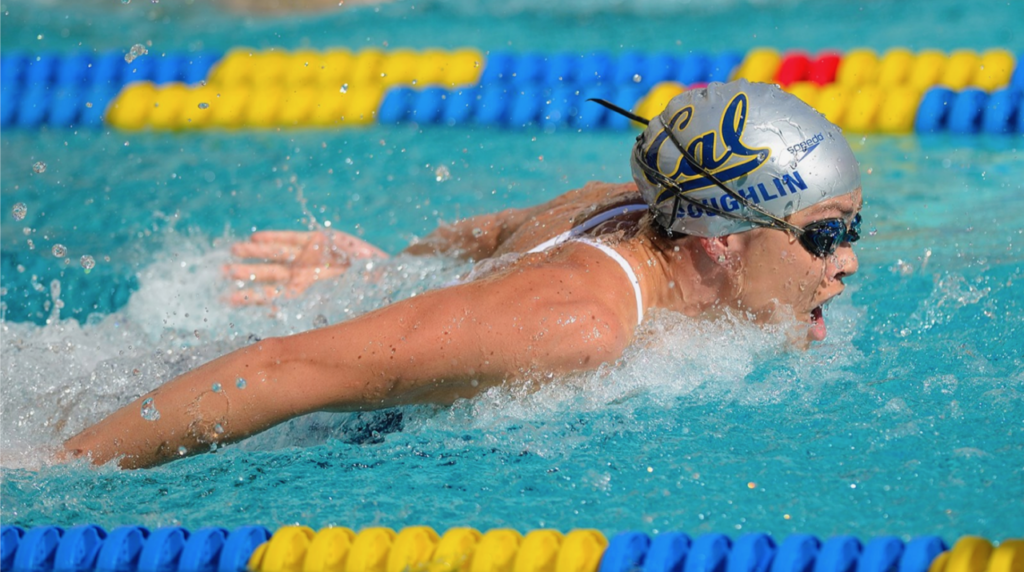
Lilly’s legacy was and is still visible in the form of elite Cal female student athletes and alumni. Natalie Coughlin, for example, swam for Cal in the early 2000s. She’s now a 12-time Olympic medalist, including three gold medals. Photo: UC Berkeley
With the merging of the men’s and women’s departments, Cal Athletics relieved Lilly of her duties. But 30 years later, Lilly’s legacy lives on in the form of elite women’s athletics programs. For progress to be made, Lilly hoped to predict the future and act quickly in order to stay one step ahead of other institutions. She managed the growth of coaching staff personnel and salaries with both budget constraints and trends in college athletics in mind, accelerating Cal Women’s Athletics’ rise to prominence.
There was a progression, but one of my favorite sayings which I think I made up myself is, “You don’t try to keep up with Joneses. You figure out where the Joneses are going to go and get there before they do.” And that was my philosophy. And so I always tried to figure out where sports were going, where were salaries going, where was the pressure going to be, and so forth, and then try to get all that into one big picture and then do what I could do within the money that we had.
More than 21 of the 45 oral histories in the Oral History Center’s Athletics at UC Berkeley project mention Lilly and her work.
Find this interview and all our oral histories from the search feature on our home page. You can search by name, keyword, and several other criteria.
William Cooke recently graduated from UC Berkeley with a major in political science and a minor in history. In addition to working as a student editor for the Oral History Center, he was a reporter in the Sports department at UC Berkeley’s independent student newspaper, The Daily Californian.
Related Resources from The Bancroft Library
The Bancroft Library has hundreds of materials related to athletics in California and beyond. Here are just a few.
Lilly’s oral history is part of the Oral History Center’s project, Oral Histories on the Management of Intercollegiate Athletics at UC Berkeley: 1960-2014. This project comprises forty-five published interviews, conducted by John Cummins. Cummins was the Associate Chancellor and Chief of Staff who worked under UC Berkeley Chancellors Heyman, Tien, Berdahl, and Birgeneau from 1984 through 2008. Intercollegiate Athletics reported to Cummins from 2004 to 2006. Among the interviewees are longtime Chair of the Physical Education Department Roberta Park and former Assistant and Associate Athletic Director in the Women’s Athletic Department Joan Parker.
Articles based on this oral history project
William Cooke, “Title IX in Practice: How Title IX Affected Women’s Athletics at UC Berkeley and Beyond”
William Cooke, “Heavy hitters: the modern era of athletics management at UC Berkeley”
William Cooke: Luella Lilly: Cal’s first and only Director of Women’s Athletics
Other resources from The Bancroft Library
Cal women athletes hall of fame. Inauguration ceremony… May 24, 1978. Bancroft Library/University Archives. UC Archives ; 308m.p415.hf.1978
Cal sports 80’s. A program to improve the environment for Intercollegiate athletics at the University of California, Berkeley. Bancroft Library/University Archives. UC Archives ; 308m.p41.csp.1980
A celebration of excellence : 25 years of Cal women’s athletics. Bancroft Library/University Archives. UC Archives Folio ; 308m.p415.c.2001
About the Oral History Center
The UC Berkeley Oral History Center preserves voices of people from all walks of life, with varying political perspectives, national origins, and ethnic backgrounds. You can find all our oral histories from the search feature on our home page. Search by name, keyword, and several other criteria. We are committed to open access and our oral histories and interpretive materials are available online at no cost to scholars and the public.
Sign up for our monthly newsletter featuring think pieces, new releases, podcasts, Q&As, and everything oral history. Access the most recent articles from our home page or go straight to our blog home.
Oral History Project Wins Autry Public History Prize
The UC Berkeley Oral History Center (OHC) is thrilled to announce that OHC historian Todd Holmes and project partner Emi Kuboyama from Stanford University have won the 2023 Autry Public History Prize for their digital project, Redress: An Oral History. The award is given by the Western History Association for the best project in public history. Released to the public in 2022, the project documents the history of Japanese American Redress through oral histories and a documentary film, which are featured with related historical resources on a dedicated educational website.
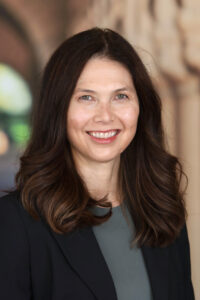
Holmes and Kuboyama began the project in 2018 with the initial goal of documenting the history of the Office of Redress Administration (ORA), the little-known agency charged with administering redress by the Civil Liberties Act of 1988. Emi Kuboyama, the principal creator of the project, had a direct link to the agency and its work. As a native of Hawaii, she was no stranger to the history of Japanese American incarceration or the impact that dark period still held in Japanese American communities. She also began her legal career with the agency in 1994, an experience that had a profound impact on her personally and professionally.
In 2017, Kuboyama attended the OHC’s Advanced Oral History Institute to explore how oral history could help document the historic redress program and the work of the ORA. There she met OHC historian Todd Holmes and the two agreed to partner on the project. With the support of a Japanese American Confinement Sites grant from the National Parks Service, they conducted over a dozen interviews with former ORA staff, as well as community leaders affiliated with the program. The recordings and transcripts of those interviews are now housed at the Densho Digital Repository. Upon the completion of the oral history interviews, Holmes and Kuboyama recognized the need to put the history of the ORA into conversation with the experience of the Japanese American community in its forty-six-year journey from internment to redress. With the generous support of the Henri and Tomoye Takahashi Foundation, they enlisted the help of filmmaker Jon Ayon. The collaboration resulted in the film, Redress, which offers the first in-depth look at the history of Japanese American redress as told by the community members who took part in the program, and the government professionals who administered it.
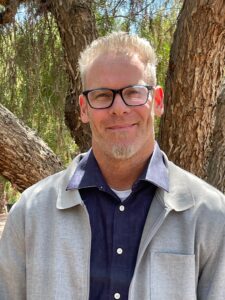
The last part of this digital project was to create a website that would not only serve as a home for the oral histories and film, but also an educational space for students and the public to learn more about the history of redress. Created by Todd Holmes and Heidi Holmes, the website features two historical pages that supplement the film and oral histories, as well as a resources page that points visitors to related historical material such as books, films, and oral history collections. Since the project’s release in fall 2022, the website has received over 43,000 visitors.
The prize was awarded to Holmes and Kuboyama in October 2023 at the annual Western History Association Conference. In the awards program, the Autry Committee praised the Redress project as “an excellent model of professional public history practice that documents a moment in Western American History that has particular significance for today’s conversations about reparations within other marginalized groups.” The committee also applauded how the project “showcases the power of the medium of oral history.”
The Oral History Center congratulates Todd Holmes, Emi Kuboyama, and their partners on an outstanding project and contribution. For more on the history of Japanese American Redress, visit the project website. And to learn more about the Japanese American experience and the legacy of WWII, see the new oral histories of the OHC’s Japanese American Intergenerational Narratives project, which are featured in the newest season of The Berkeley Remix podcast.
Resources
Redress: An Oral History website
Oral History Center’s Japanese American Intergenerational Narratives Oral History Project
The Berkeley Remix podcast: Season 8: “‘From Generation to Generation’: The Legacy of Japanese American Incarceration”
The Oral History Center Presents the Japanese American Intergenerational Narratives Project
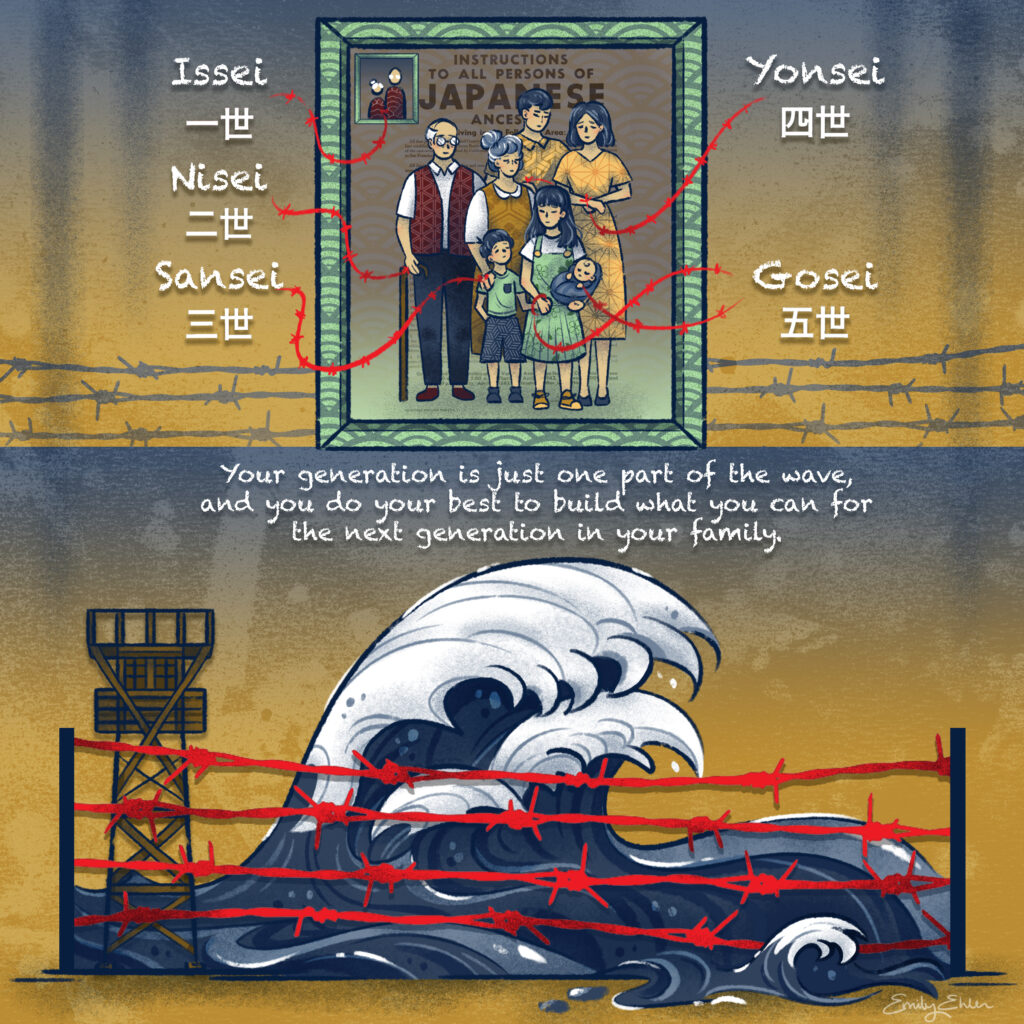
The Oral History Center is proud to announce the launch of the Japanese American Intergenerational Narratives Project, featuring 100 hours of oral history interviews with 23 Japanese American narrators who are survivors and descendants of two World War II-era sites of incarceration: Manzanar in California and Topaz in Utah. The majority of these oral histories are live on the Oral History Center website, where you can learn more about the project and the interviews themselves.
Just a couple of months after the United States entered World War II, President Franklin D. Roosevelt signed Executive Order 9066 on February 19, 1942. This order authorized the government to forcibly remove more than 120,000 Japanese American civilians—even American-born citizens—from their homes on the West Coast, and put them into incarceration camps shrouded in barbed wire and patrolled by armed guards for the duration of the war. This imprisonment uprooted families, disrupted businesses, and dispersed communities—impacting generations of Japanese Americans.
Even as the intergenerational impacts of World War II-era incarceration still touch many Japanese American descendants today, some Americans remain unaware of this history. It was in the spirit of illuminating the wounds of incarceration that OHC interviewers Roger Eardley-Pryor, Shanna Farrell, and Amanda Tewes embarked on this series of oral histories to record the stories of child survivors and descendants. Using healing as a throughline, these life history interviews explore identity, community, creative expression, and the stories family members passed down about how incarceration shaped their lives.
The project began in 2021 with funding from the National Park Service’s Japanese American Confinement Sites Grant. The interviews were conducted remotely via Zoom due to the global COVID-19 pandemic. The OHC team gathered a group of stakeholders with ties to the community to advise the project. Dr. Lisa Nakamura, a clinical psychologist who is herself a descendant of the Topaz incarceration camp, led Healing Circles for the project narrators after their interviews to process the experience without the interviewers present.
In addition to the oral histories, the OHC team produced a podcast as Season 8 of The Berkeley Remix to highlight the narrative themes that emerged from the interviews. They also commissioned artist Emily Ehlen, who created ten illustrations based upon stories and themes recorded in the interviews.
The podcast, “‘From Generation to Generation’: The Legacy of Japanese American Incarceration,” is a four-episode season featuring stories of activism, contested memory, identity and belonging, as well as artistic expression and memorialization of incarceration. It was produced by Rose Khor, Roger Eardley-Pryor, Shanna Farrell, and Amanda Tewes, and narrated by Devin Katayama. All four episodes are live on the OHC’s SoundCloud and in your podcast feeds.
Emily Ehlen’s artwork can be found on the OHC’s blog website and is available for download for educational purposes. Roger Eardley-Pryor sat down with Emily to learn more about her background, her work, and her process of creating these graphic illustrations.
Please explore the oral history transcripts and videos, listen to season 8 of The Berkeley Remix, and view Emily Ehlen’s artwork for more about the OHC’s Japanese American Intergenerational Narratives Project.
A special thanks to the National Park Service’s Japanese American Confinement Sites Grant for funding this project.
The views and conclusions contained in this document are those of the authors and should not be interpreted as representing the opinions or policies of the U.S. Government. Mention of trade names or commercial products does not constitute their endorsement by the U.S. Government.
ABOUT THE ORAL HISTORY CENTER
The Oral History Center of The Bancroft Library preserves voices of people from all walks of life, with varying political perspectives, national origins, and ethnic backgrounds. We are committed to open access and our oral histories and interpretive materials are available online at no cost to scholars and the public. You can find our oral histories from the search feature on our home page. Search by name, keyword, and several other criteria. Sign up for our monthly newsletter featuring think pieces, new releases, podcasts, Q&As, and everything oral history. Access the most recent articles from our home page or go straight to our blog home.
Please consider making a tax-deductible donation to the Oral History Center if you would like to see more work like this conducted and made freely available online. The Oral History Center is a predominantly self-funded research unit of The Bancroft Library. As such, we must raise the funds to cover the cost of all the work we do, including each oral history. You can give online, or contact us at ohc@berkeley.edu for more information about our funding needs for present and future projects.
The Oral History Center Presents The Berkeley Remix Season 8: “‘From Generation to Generation’: The Legacy of Japanese American Incarceration”
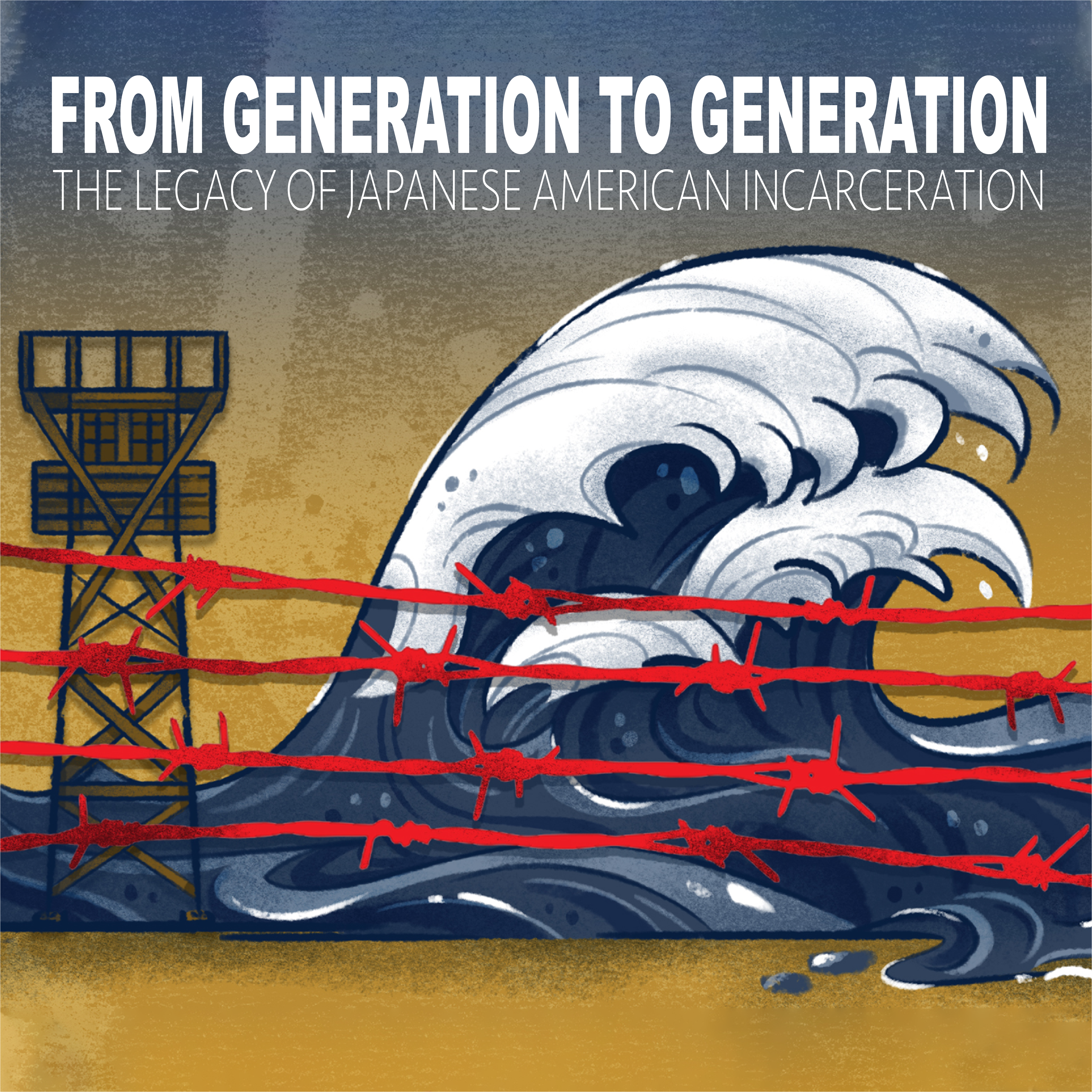
Just a couple of months after the United States entered World War II, President Franklin D. Roosevelt signed Executive Order 9066 on February 19, 1942. This order authorized the government to forcibly remove more than 120,000 Japanese American civilians—even American-born citizens—from their homes on the West Coast, and put them into incarceration camps shrouded in barbed wire and patrolled by armed guards for the duration of the war. This imprisonment uprooted families, disrupted businesses, and dispersed communities—impacting generations of Japanese Americans.
In season 8 of The Berkeley Remix, a podcast of the Oral History Center at UC Berkeley, we are highlighting interviews from the Japanese American Intergenerational Narratives Oral History Project. The OHC team interviewed twenty-three survivors and descendants of two World War II-era sites of incarceration: Manzanar in California and Topaz in Utah. This four-part series includes clips from these interviews, which were recorded remotely via Zoom. Using healing as a throughline, these life history interviews explore identity, community, creative expression, and the stories family members passed down about how incarceration shaped their lives.
This season features interview clips from the Japanese American Intergenerational Narratives Oral History Project.
Produced by Rose Khor, Roger Eardley-Pryor, Shanna Farrell, and Amanda Tewes. Narration by Devin Katayama. Artwork by Emily Ehlen. A special thanks to the National Park Service’s Japanese American Confinement Sites Grant for funding this project.
The views and conclusions contained in this document are those of the authors and should not be interpreted as representing the opinions or policies of the U.S. Government. Mention of trade names or commercial products does not constitute their endorsement by the U.S. Government.
Episode 1: “‘It’s Happening Now’: Japanese American Activism.” In this episode, we explore activism and civic engagement within the Japanese American community. The World War II-era incarceration of Japanese Americans inspired survivors and descendants to build diverse coalitions and become engaged in social justice issues ranging from anti-Vietnam War activism to supporting Muslim Americans after 9/11 to protests against the separation of families at the US-Mexico border. Many Japanese Americans also participated in the redress movement, during which time many individuals broke their silence about incarceration, and empowered the community to speak out against other injustices.
This episode features interviews from the Oral History Center’s Japanese American Intergenerational Narratives Oral History Project, and includes clips from: Bruce Embrey, Hans Goto, Jean Hibino, Roy Hirabayashi, Susan Kitazawa, Kimi Maru, Margret Mukai, Ruth Sasaki, Nancy Ukai, and Rev. Michael Yoshii. Additional archival audio from Tsuru for Solidarity and the National Archives. The transcript from Sue Kunitomi Embrey’s testimony comes from the Los Angeles hearings from the Commission on Wartime Relocation and Internment of Civilians. To learn more about these interviews, visit the Oral History Center’s website.
Episode 2: “‘A Place Like This’: The Memory of Incarceration.” In this episode, we explore the history, legacy, and contested memory of Japanese American incarceration during World War II. Incarceration represented a loss of livelihoods, property, and freedom, as well as a disruption—cultural and geographic—in the Japanese American community that continued long after World War II. While some descendants heard family stories about incarceration, others encountered only silence about these past traumas. This silence was reinforced by a society and education system which denied that incarceration occurred or used euphemisms to describe what Japanese Americans experienced during World War II. Over the years, Japanese Americans have worked to reclaim the narrative of this past and engage with the nuances of terminology in order to tell their own stories about the personal and community impacts of incarceration.
This episode features interviews from the Oral History Center’s Japanese American Intergenerational Narratives Oral History Project, and includes clips from: Miko Charbonneau, Bruce Embrey, Hans Goto, Patrick Hayashi, Jean Hibino, Mitchell Higa, Carolyn Iyoya Irving, Susan Kitazawa, Ron Kuramoto, Kimi Maru, Lori Matsumura, Alan Miyatake, Jennifer Mariko Neuwalder, Ruth Sasaki, Masako Takahashi, Peggy Takahashi, Nancy Ukai, and Rev. Michael Yoshii. Additional archival audio from the US Office of War Information and the Internet Archive. To learn more about these interviews, visit the Oral History Center’s website.
Episode 3: “‘Between Worlds’: Japanese American Identity and Belonging.” In this episode, we explore identity and belonging in the Japanese American community. For many Japanese Americans, identity is not only personal, it’s a reclamation of a community that was damaged during World War II. The scars of the past have left many descendants of incarceration feeling like they don’t wholly belong in one world. Descendants have navigated identity and belonging by participating in Japanese American community events and supporting community spaces, traveling to Japan to connect with their heritage, as well as cooking and sharing Japanese food. However, embracing Japanese and Japanese American culture can highlight for descendants their mixed identities, leaving them feeling even more like they have a foot in multiple worlds.
This episode features interviews from the Oral History Center’s Japanese American Intergenerational Narratives Oral History Project, and includes clips from: Miko Charbonneau, Hans Goto, Jean Hibino, Roy Hirabayashi, Carolyn Iyoya Irving, Susan Kitazawa, Kimi Maru, Lori Matsumura, Alan Miyatake, Jennifer Mariko Neuwalder, Ruth Sasaki, Steven Shigeto Sindlinger, Masako Takahashi, Peggy Takahashi, Nancy Ukai, Hanako Wakatsuki-Chong, and Rev. Michael Yoshii. To learn more about these interviews, visit the Oral History Center’s website.
Episode 4: “‘Origami as Metaphor’: Creative Expression, Memorialization, and Healing.” In this episode, we explore creative expression, healing, and the memorialization of Japanese American incarceration. It is clear that stories about World War II incarceration matter. Some descendants embrace art and public memorialization about incarceration history as not only means of personal creative expression and honoring the experiences of their ancestors, but also as avenues to work through the intergenerational impact of this incarceration. Stories shared through art and public memorialization help people both inside and outside of the Japanese American community learn about the past so they have the tools to confront the present. Others seek healing from this collective trauma by going on pilgrimage to the sites of incarceration themselves, reclaiming the narrative of these places.
This episode features interviews from the Oral History Center’s Japanese American Intergenerational Narratives Oral History Project, and includes interviews from: Miko Charbonneau, Bruce Embrey, Hans Goto, Patrick Hayashi, Jean Hibino, Mitchell Higa, Roy Hirabayashi, Carolyn Iyoya Irving, Susan Kitazawa, Ron Kuramoto, Kimi Maru, Lori Matsumura, Jennifer Mariko Neuwalder, Ruth Sasaki, Masako Takahashi, Nancy Ukai, Hanako Wakatsuki-Chong, and Rev. Michael Yoshii. Additional audio of taiko drums from Roy Hirabayashi. To learn more about these interviews, visit the Oral History Center’s website.
ABOUT THE ORAL HISTORY CENTER
The Oral History Center of The Bancroft Library preserves voices of people from all walks of life, with varying political perspectives, national origins, and ethnic backgrounds. We are committed to open access and our oral histories and interpretive materials are available online at no cost to scholars and the public. You can find our oral histories from the search feature on our home page. Search by name, keyword, and several other criteria. Sign up for our monthly newsletter featuring think pieces, new releases, podcasts, Q&As, and everything oral history. Access the most recent articles from our home page or go straight to our blog home.
Please consider making a tax-deductible donation to the Oral History Center if you would like to see more work like this conducted and made freely available online. The Oral History Center is a predominantly self-funded research unit of The Bancroft Library. As such, we must raise the funds to cover the cost of all the work we do, including each oral history. You can give online, or contact us at ohc@berkeley.edu for more information about our funding needs for present and future projects.
